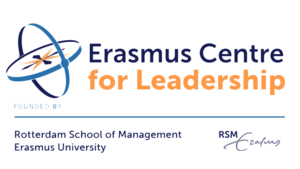We have developed three training programmes to help organisations to manage age diversity among employees – both to avoid the problems it brings, and to bring out the advantages that age-diverse workforces confer on organisations. The training programmes came from our research and have been field-tested.
They are free to download and use, but please do share your experiences with us so we can track their potential impact. To give us your thoughts and feedback, please email Dr Anne Burmeister burmeister@rsm.nl.

How we developed the training programmes
The starting point for our research and the development of our training programmes came from the fact that age-diverse co-workers do not automatically work effectively across their differences. We aimed to help organisations to manage age diversity effectively.
Age diversity is increasing in organisations, simply because of the change in demographics of the population. And while some businesses use it in their marketing communications as a benefit, the reality can be another story.
Age diversity is associated with challenges that can lead to identity-based differences between younger and older co-workers – which in turn can lead to sub-grouping, stereotyping, and conflicts. It’s also associated with an effect on opportunities because of the knowledge-based differences between younger and older co-workers. Handled appropriately, these differences can improve problem-solving and creativity.
Two of our age diversity training programmes address both perspectives. We have tested and demonstrated their effects on relationship quality and knowledge transfer.
The third training programme is an integrated one. It covers aspects of identity-oriented and knowledge-oriented age diversity training. When we tested it, we found it can indeed help companies to increase participants’ contact quality and knowledge transfer.
Reaching the Heart or the Mind? Test of two Theory-Based Training Programs to Improve Interactions Between Age-Diverse Coworkers
The article Reaching the Heart or the Mind? Test of two Theory-Based Training Programs to Improve Interactions Between Age-Diverse Coworkers was published in the Academy of Management Learning & Education in 2020. AOM Insights published a practitioner-oriented summary of the article that you can access here.
Which training programme should I use?
Our three training programmes are evidence-based products for use in practice by professionals. They can be used to improve relationships and knowledge transfer between age-diverse co-workers.The order of the modules is slightly different in each of the programmes to present the most effective training, but all three of them contain an introductory element, a reflection component, a scientific background module, joint exercises, and the development of an action plan to facilitate the transfer of what has been learned into practice.
Here’s how to decide which on is suitable for your organisation and your challenges: